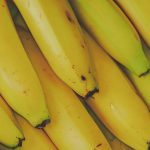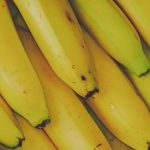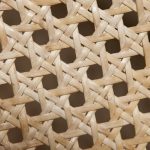You might hear abaca called “Manila hemp,” but it’s not true hemp. Abaca comes from the banana family, while hemp is a different plant altogether from Cannabis sativa. The name “Manila hemp” refers to abaca’s origin near Manila and its strong fiber, not its botanical ties. Abaca fibers are softer and more flexible than hemp’s coarse stalk fibers. If you want to understand these differences better and their uses, keep exploring.
Table of Contents
Key Takeaways
- Abaca (Musa textilis) is a banana-family plant, while hemp (Cannabis sativa) belongs to the Cannabaceae family, making them botanically distinct.
- The term “Manila hemp” refers to abaca’s origin near Manila and its hemp-like fiber qualities, not to its botanical classification.
- Abaca fibers are longer, softer, and more flexible than hemp fibers, with superior tensile strength and durability.
- Both fibers resist saltwater damage, but abaca is primarily used for ropes, specialty papers, and textiles, unlike hemp’s broader industrial uses.
- Misconceptions arise from abaca’s nickname “Manila hemp,” causing confusion with cannabis hemp despite their different origins and applications.
Origins and Botanical Classification of Abaca
Although you might confuse abaca with hemp due to their similar uses, abaca comes from a distinct plant species native to the Philippines. Known scientifically as Musa textilis, abaca belongs to the banana family, Musaceae, unlike hemp, which is part of the Cannabaceae family.
When you look closely, abaca grows as a tall, sturdy plant with large leaves, primarily cultivated for its strong fiber found in its leaf stalks. This fiber has been traditionally used in ropes, textiles, and paper products.
Knowing that abaca and hemp come from completely different botanical backgrounds helps you understand why their properties and cultivation methods differ despite some overlapping applications.
Understanding True Hemp: Cannabis Sativa
Hemp, scientifically known as Cannabis sativa, stands apart from abaca in both appearance and use.
When you look at hemp, you’ll notice its tall, slender stalks and distinctive serrated leaves, quite different from abaca’s banana-like plant structure.
Hemp fibers come from the stalk’s outer layer and are prized for their strength and versatility in textiles, ropes, and even eco-friendly products.
Hemp fibers, sourced from the stalk’s outer layer, are valued for strength and eco-friendly versatility.
Unlike abaca, hemp contains cannabinoids, including trace amounts of THC, which has sparked its complex legal status worldwide.
You’ll find hemp cultivated primarily for fiber, seed oil, and medicinal compounds.
Understanding these botanical and functional differences helps you see why abaca, despite its nickname, isn’t a hemp variety but a unique plant with its own valuable fibers and applications.
Why Is Abaca Called “Manila Hemp”?
You might wonder why abaca is often called “Manila hemp” even though it’s not true hemp.
The name comes from its origins around Manila and its fiber’s strong, hemp-like qualities used historically for ropes and textiles.
Comparing the fibers helps you see why this nickname stuck despite the botanical differences.
Origins of “Manila Hemp”
Because abaca has long been exported from the Philippines’ capital, Manila, traders and manufacturers started calling it “Manila hemp.”
This name stuck not because abaca is related to hemp, but because Manila served as the main hub where abaca fiber entered global markets.
You might assume the term implies botanical ties, but it actually highlights the fiber’s point of origin and commercial route.
Back in the day, labeling products by their export location was common, and “Manila hemp” simply identified the fiber’s source.
When you hear “hemp” here, think of it as a trade nickname rather than a scientific classification.
Understanding this helps you see why abaca’s identity got tangled with hemp, even though they’re entirely different plants.
Historical Usage Context
Although abaca isn’t related to hemp botanically, its strong, fibrous qualities made it a natural substitute for hemp in many historical applications.
When you look back at maritime history, abaca fiber was prized for making ropes, sails, and fishing nets because it resisted saltwater and decay better than many alternatives.
Traders and sailors often called it “Manila hemp” since it came from the Philippines’ capital, Manila, and served similar purposes as hemp fiber.
If you handled ropes or twines labeled “Manila hemp,” you’d be working with abaca, not true hemp.
This practical use in industries dependent on durable, natural fibers led to the name sticking, even though botanically, abaca and hemp differ markedly.
The historical context reflects function over scientific accuracy.
Fiber Characteristics Comparison
The nickname “Manila hemp” stuck not just due to historical usage but because abaca shares several fiber qualities with true hemp.
When you compare the two, both fibers are long, strong, and resistant to saltwater damage, making them ideal for ropes and marine applications.
Abaca fibers are finer and softer, offering greater flexibility, while hemp fibers tend to be coarser and stiffer.
You’ll notice abaca excels in tensile strength, often outperforming hemp in durability, which explains its popularity for heavy-duty uses.
However, unlike hemp, abaca lacks the lignin content that gives hemp its rigidity.
Comparing the Physical Properties of Abaca and Hemp
When you compare abaca and hemp, you’ll notice distinct differences in their physical properties that influence their uses.
Abaca fibers are longer, more flexible, and significantly softer than hemp fibers, which tend to be coarser and stronger. This flexibility makes abaca excellent for applications requiring pliability, while hemp’s rigidity offers superior durability.
You’ll also find that abaca fibers are lighter, contributing to lightweight products, whereas hemp’s density provides added toughness. Additionally, abaca has a natural resistance to saltwater, a property hemp lacks, making it suitable for marine uses.
Both fibers are strong, but their tensile strengths differ due to these variations. Understanding these physical contrasts helps you appreciate why, despite the “Manila hemp” label, abaca and hemp serve different roles.
Common Uses of Abaca Versus Hemp Fibers
You’ll notice abaca fibers are often used in ropes, paper, and textiles thanks to their strength and flexibility.
Hemp fibers, on the other hand, find common use in clothing, bioplastics, and construction materials.
Let’s compare how these fibers serve different industries and purposes.
Abaca Fiber Applications
Abaca and hemp fibers serve different purposes that might surprise you.
When you use abaca, you’re tapping into a fiber prized for its exceptional strength and water resistance. It’s commonly found in ropes, specialty papers like tea bags, and even in textiles that require durability and flexibility.
You’ll also see abaca in eco-friendly products such as floor mats and handicrafts, where its natural look and toughness shine. Unlike hemp, abaca excels in applications where moisture exposure is frequent, making it ideal for maritime uses.
Hemp Fiber Applications
Although hemp and abaca fibers both offer strength and versatility, hemp is more widely used across various industries due to its durability and eco-friendly properties.
When you choose hemp fibers, you tap into a resource that’s perfect for textiles, ropes, and even bioplastics. Hemp’s natural resistance to pests and mold means it requires fewer pesticides, making it a sustainable choice.
You’ll find hemp in clothing, home goods, and industrial fabrics, thanks to its softness and strength.
Unlike abaca, hemp also plays a big role in construction materials like hempcrete, which improves insulation and reduces carbon footprints.
Environmental and Economic Impact of Abaca and Hemp Cultivation
When you compare the environmental and economic impacts of abaca and hemp cultivation, you’ll find both crops offer unique benefits and challenges.
Abaca thrives in tropical climates, requiring little pesticide use and supporting biodiversity. Hemp grows quickly with minimal water and enriches soil, making it eco-friendly as well.
Economically, abaca provides steady income for farmers in the Philippines, while hemp’s diverse uses boost global markets.
Consider these points:
- Abaca supports sustainable farming in specific regions; hemp adapts broadly.
- Hemp’s rapid growth cycle means faster returns.
- Abaca fibers command premium prices due to their strength.
- Hemp cultivation can revitalize degraded soils, benefiting long-term agriculture.
Understanding these impacts helps you appreciate why abaca isn’t simply “Manila hemp.”
Frequently Asked Questions
Can Abaca Fiber Be Used in Medical Textiles?
You can use abaca fiber in medical textiles because it’s strong, lightweight, and biodegradable. Its natural properties make it ideal for wound dressings and surgical supplies, offering durability and comfort in medical applications.
Is Abaca Cultivation Affected by Climate Change?
You’ll find that rising temperatures could reduce abaca yields by up to 30%. Since it thrives in specific climates, climate change challenges your cultivation efforts, pushing you to adapt quickly or risk damaging this valuable fiber source.
What Are the Harvesting Methods for Abaca Fibers?
You harvest abaca fibers by cutting mature stalks, stripping the outer layers, and extracting fibers through manual or mechanical decortication. Then, you dry and bundle the fibers for processing, ensuring quality and durability.
Are There Any Legal Restrictions on Abaca Trade?
Picture vibrant abaca fibers flowing through markets worldwide. You’ll find trade mostly unrestricted, but some countries may require permits or adhere to export rules, so always check local laws before shipping to avoid tangled legal webs.
How Does Abaca Fiber Processing Differ From Hemp?
You strip abaca leaves, then extract fibers by hand or machine, while hemp processing involves retting to break down stalks before fiber extraction. Both require different techniques tailored to their plant structures and fiber qualities.
- The Use of Nonwovens in Construction and Civil Engineering - July 11, 2025
- The Use of Nonwovens in Construction and Civil Engineering - July 11, 2025
- The Use of Nonwovens in Construction and Civil Engineering - July 11, 2025







